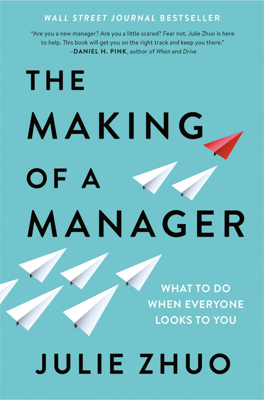Making Things Happen
Start with a Concrete Vision
- Importance of Tangibility: Abstract goals like "help," "improve," or "enhance" should be replaced by tangible visions that clearly describe measurable outcomes.
- Examples of Effective Visions:
- "A chicken in every pot" instead of "economic prosperity."
- Mark Zuckerberg’s vision for Facebook to connect the entire world.
- Creating Vision:
- Ask what will be different in 2-3 years.
- Consider team reputation and unique superpowers.
- Develop a litmus test for team performance.
Create a Believable Game Plan
- Realistic Strategies: Ensure plans are achievable with the given resources and team strengths.
- Alignment with Larger Organization: Team plans should support the broader organizational goals.
- Leverage Strengths: Focus on tasks that align with your team’s expertise.
Focus on Doing a Few Things Well
- Pareto Principle: Focus on the 20% of tasks that yield 80% of results.
- Prioritization: Always tackle high-priority tasks before moving to less critical ones.
- Example: Facebook's success with photo-tagging over many other features.
Define Who Is Responsible for What
- Clear Ownership: Assign specific responsibilities to team members to avoid confusion and ensure accountability.
- Explicit Assignments: Clearly state roles and tasks during meetings and in communications.
Break Down Big Goals into Smaller Pieces
- Parkinson's Law: Work expands to fill the time available. Set shorter deadlines to increase productivity.
- Milestones: Break down big projects into smaller, manageable steps with clear deadlines and accountability.
Perfect Execution Over Perfect Strategy
- Execution Matters: Speedy and accurate implementation is critical, often more than perfect planning.
- Iterative Learning: Use short cycles to test and refine ideas quickly.
- Indicators of Good Execution:
- Prioritized lists of tasks.
- Efficient decision-making processes.
- Commitment to decisions.
- Resilience and learning from failures.
Balancing Short-Term and Long-Term Outcomes
- Hiring Considerations: Balance between immediate needs and long-term potential in hiring decisions.
- Planning and Performance Management: Avoid short-sighted or overly long-term fixes, and find a middle ground for sustainable success.
Define a Long-Term Vision and Work Backward
- Focus on Big Picture: Ensure everyday tasks align with the long-term vision.
- Vision-Driven Decisions: Projects and tasks should contribute to the overarching goals of the organization.
Take a Portfolio Approach
- Balanced Project Timelines: Divide team efforts into short-term, medium-term, and long-term projects to ensure immediate progress and future vision.
- Continuous Improvement: Constantly seek to improve core functions while exploring innovative ideas.
Talk about How Everything Relates to the Vision
- Clarity of Purpose: Regularly communicate how day-to-day work aligns with the broader organizational goals.
- Beware of Proxy Goals: Focus on actual objectives rather than just their indicators to avoid counterproductive practices.
Good Process Is Ever Evolving
- Debriefs and Retrospectives: Regularly analyze processes and outcomes to learn and improve.
- Repeatable Best Practices: Create detailed playbooks and checklists for complex tasks.
- Adaptive Processes: Continuously update and refine processes for ongoing relevance and efficiency.
Heraclitus's philosophy reminds managers that each challenge is unique and requires careful consideration, planning, and adaptability. Reflect on experiences and apply lessons learned to future endeavors.
